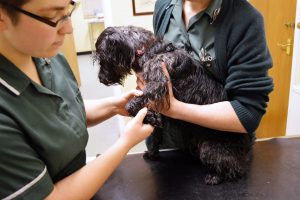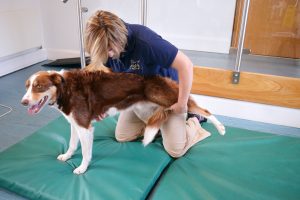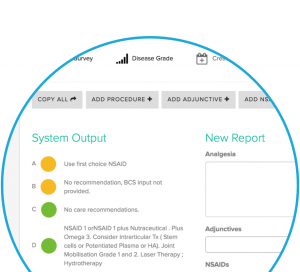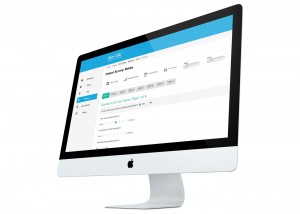
Osteoarthritis is the most common cause of pain disability in dogs. Out of the 8.5m dogs in the UK, 1.7m will develop arthritis. The number of cases of arthritis in dogs is rising – recent research revealed that the number has risen by 312% between 2012 -2015 and is expected to rise to 369% by the end of this year.
Osteoarthritis can’t be cured and if your dog has arthritis, every day you will undoubtedly be asking yourself the same question “What can I do to help my dog be in less pain and have a better quality of life?”
Watching your dog suffer is painful for you and your family but there are a number of things you can do to help to reduce the amount of pain your dog is in and improve his quality of life, using a multi-modal approach.
What is multi-modal treatment?
According to the US National Cancer Institute, multimodal or multimodality treatment is ‘therapy that combines more than one method of treatment’. This multifaceted approach has many proven benefits over singular treatment methods and takes a holistic view of the patient, taking into account factors such as age, breed and lifestyle. It’s a treatment plan using the right combination of methods designed specifically for your dog.

What are the different methods of treatment?
The AIM OA System produces a bespoke plan for each patient using different elements of a six approaches to reduce pain and improve quality of life for the arthritic dog:
A – Analgesia
B – Body Condition Score and diet
C – Care with environmental and drug toxicity issues
D – Disease modifications
E – Exercise
F – Follow up
A – Analgesia
Nonsteroidal Anti-Inflammatory Drugs (NSAIDs)are the main type of analgesic medications that relieve arthritis pain.
NSAIDs decrease the prostaglandins that cause pain, allowing your dog to move around more easily and exercise, which in turn helps their heart, lungs and digestive systems to function normally.
With reduced pain, your dog’s spirit will be revived and he can exercise more and maintain muscle strength.
B – Body Condition Score and diet
Body Condition Score is just as important to monitor as your dog’s weight. By grading your dog using a Body Condition Score, your vet can produce the right diet and exercise plan to suit your pet’s body, activity level and lifestyle based on your dog’s appearance and proportion of body fat. Maintaining your dog at the right weight can have a huge effect on his quality of life and the level of pain of arthritis.
Nutrition is an important part of the osteoarthritis treatment regimen. Arthritic dogs can be helped by being given the right foods, avoiding certain foods and by taking supplements that will reduce inflammation, promote healthy cartilage and encourage and maintain joint health.
C – Care with environmental and drug toxicity issues
Another important consideration if you have an arthritic dog is your dog’s environment. There will be things you can change to make things easier for your dog for example covering slippery floors with non-slip matting, putting ramps in place to allow easier access in and out of the car and house, making sure they have a warm and supportive bed and avoiding covering beds with blankets as these can make it difficult and painful for painful joints to get out of.
D – Disease modifications
Unlike anti-inflammatories which tend to treat the symptoms of osteoarthritis, Disease Modifying Osteoarthritis Drugs (DMOADs) target the progression of the disease in your dog. Research shows that using DMOADs slows the progression of the disease and can also relive pain and inflammation. DMOADs are used proactively to treat dogs which are considered at risk of developing arthritis. There are also new exciting developments with products like stem cells which can be injected into diseased joints. Simple mobilisation exercises performed daily on affected joints can also greatly help to reduce pain and stiffness
E – Exercise
An exercise programme designed specifically for your dog is a critical component of managing arthritis. Joints that don’t get regular exercise will stiffen even more and worsen symptoms. A combination of walking, swimming and rehabilitative exercise will help to strengthen muscles, keep ligaments and tendons flexible, prevent obesity and help to circulate blood to stiff joints. Swimming is particularly effective as this is non-weight bearing and can help strengthen your dog’s muscles without putting strain on his painful joints.
F – Follow up
Monitoring your dog is especially important as regular check ups will inform you and your vet of progress using the current methods and flag up areas that need to be modified and adjusted to improve results.
Why the AIM OA System works
AIM OA Sys enables vets and pet owners to work together and build a totally bespoke plan using the above multi-modal system to reduce pain and improve quality of life for your dog.
The system is web based and consists of a series of questions for you, the pet owner that can be completed in the waiting room on an iPad or on a web enabled device, and a series of questions for your vet, based on their clinical examination of your dog.

A red/amber/green highlight is used to give an indication of priority in each of the five domains (A,B,C,D,E) and an at-a-glance summary of the plan is then produced, making it easy for you to gain a better understanding of what the plan is aiming to achieve and how you can manage this on a day-to-day basis.
The multi-modal management plan with clear instructions is then printed off for you with customised general exercise guidelines for our dog as well as over 100 specific exercises, with instructions.
AIM OA has been developed by the world’s leading authorities in canine arthritis to produce the right combination of treatments for your dog.

AIM OA Sys is available in veterinary practices in the UK now.
Veterinary practices can find out more information here.